Excellent success in the treatment of restless legs syndrome
Dr. Michael Wagner, Specialist in General Medicine, Villingen-Schwenningen, Germany
Definition of restless legs syndrome — hereinafter referred to as RLS
RLS is a sleep-related neurological disorder affecting the legs. RLS was originally referred to asWittmaack-Ekbom syndrome orWillis- Ekbom disease. The original description dates back to 1861 and the term RLS was coined by Swedish neurologist Karl-Axel Ekbom in 1945.
A distinction is made between two types of RLS:
1. Primary or idiopathic RLS
2. Secondary RLS Idiopathic RLS: The cause is largely unknown, although evidence points to a genetic link.
Secondary RLS: Occurs as a result of another disorder, e.g. iron deficiency or renal insufficiency (failure).
In Germany between 3% and 10% of the population suffer from RLS, which means that some 1.6 to 8 million people are affected by it!
This makes RLS the most common neurological disorder in Germany!
To date it has not been possible to confirm the causes of the disorder with any certainty. However, it is believed to relate to interferences in brain dopamine metabolism, specifically a dopamine deficiency in the cerebellum.
Among the genetic causes are indications of familial clustering. Genetics has no bearing on treatment, however.
Diagnosis
The following four main criteria must be fulfilled in order for the diagnosis to be confirmed:
Urge to move, mostly with paraesthesia (pins and needles)
Akathisia
Symptoms worse when resting (e.g. long car journeys)
Symptoms worse in the evening/at night
Further criteria:
> Disturbed sleep and associated consequences, e.g. tiredness during the day
> Periodic movement of limbs
Progression
✓ Onset of disorder may occur at any age
✓ Daily or only occasional occurrences
✓ More likely in middle age and older
✓ Chronic progression — consistent or increasing and with possible regression at times.
Conventional medicines merely treat the symptoms of idiopathic 1LS, with the condition hitherto considered incurable in mainstream medicine.
On the other hand, secondary RLS can be cured by treating the causes.
Note: Where iron-deficiency anaemia is considered to be the cause, the connection between iron deficiency and RLS remains largely unclear.
Secondary RLS and renal failure:
ca. 40% of dialysis patients have RLS.
Elimination of the cause, e.g. by means of a kidney transplant, results in a disappearance of the RLS in 85% of cases.
Differential diagnoses
For example:
Polyneuropathy
Arterial or venous circulatory disorders
Feeling of restlessness and disturbed sleep in the case of depression
Akathisia as a result of neuroleptic therapy
Rare: REM sleep-related behavioural disorders in the case of nocturnal frontal lobe epilepsy.
Further important RLS research methods include sleep laboratory readings in cases where diagnosis is uncertain, as well as the levodopa test: this is understood to mean a one-off test dose of 50 to 100 mg levodopa to treat symptoms. If this test leads to a reduction in or disappearance of symptoms within one or two hours, the diagnosis is confirmed as RLS.
In 85% of patients this is confirmed to be the case.
Therapy options
Conventional medicine
TCM
Homeopathy
Bioresonance therapy
Conventional medicine:
Treatment is primarily medicinal, with four groups of drugs available:
Dopamine
Dopamine agonists
Opiates
Anti-epileptic drugs
Dopamine: e.g.
Restex®(Levo and Carbidopa)
Stalevo®(Levo and Carbidopa + Entacapone)
D agonists: e.g.
Sifrol®(Pramipexole)
Adartel®(Ropinirole) Neupro®skin patches (Rotigotine)
Opiates: e.g.
Valoron® (Tilidine)
Oxygesic®(Oxycodone)
Anti-epileptic e.g.
drugs: Neurontin®(Gabapentin)
Lyrica®(Pregabalin)
TCM:
Disturbances of the liver, heart, kidney and bladder meridian among others.
Homeopathic drugs:
e.g. SchOssler salts
Magnesium phos. D6,
Potassium brom. D6 and
Zincum chlor. D6
Traditional homeopathic drugs:
Rhus tox. C or LM potency,
Zincum metall. C or LM,
Sepia C or LM.
Bioresonance therapy
Case from own practice in 2013.
Patient S. K., male, 50 years old.
Suffering from RLS for ca. 3 years (confirmed at sleep laboratory).
Therapy: Restex®and Lyrica®
His son — pollinosis — was successfully treated with BRT in 2013.
The patient wished to stop taking conventional medication.
BRT plan in our practice
A case history and examination were
followed by energetic testing:
search for overriding interferences such as geopathy, mobile phone/wi-fi, e-smog (overhead power cables), scars, metabolism, hormones, medication, anaesthesia, meridians, elimination organs, pathogenic, heavy metal and inoculation stresses, food, pollen, dental interference fields and energetic blocks, e.g. temporomandibular joint and spinal column …
Our practice case
Scars, anaesthesia, kidney meridian and kidney disease, house dust mites and birch pollen as well as EBV stress.
BRT
From my experience, when treating RLS
I strongly advise that at the start of therapy, after treating the overriding interference fields, the eliminating organs should be stabilised!
The main focus should be on the kidneys.
In this particular case, following scar therapy, the kidney meridian was stabilised with 381.1 and supported with program series 10114 + channel 2 kidney.
The next stage was to treat the house dust and birch pollen using the programs for chronic masked allergens 11 — 13313.
Finally EBV elimination was carried out with 978.1, and in addition channel 2 toxin elimination.
Specific nerve programs or series were not required or did not test.
At the start of the second treatment session the patient reported to us with amazement that in the evening following the first session he lay in bed and waited for the leg pain to begin, but it never happened! A total of eight treatments were carried out and during subsequent testing everything was found to be ok.
Our patient still remains symptom-free and enjoys an unrestricted quality of life.
Summary
I would like to make you all more aware of this important topic which is why I have given a detailed description of the relevant conventional medicine data.
To reiterate, we are talking about the most common neurological disorder in Germany, affecting up to 8 million people!
The quality of life of those affected is considerably impaired through lack of deep sleep and no prospect of a conventional medical cure.
RLS affects us all, so we need to put our trust in bioresonance! The possibilities of our regulatory medicine are endless!
Energetic relief for the system enables the body to regulate itself again.
From a BRT perspective, RLS is far from incurable!
Thank you for listening!
Literature
Wikipedia and Prof. Dr. J. Sieb: Restless Legs
